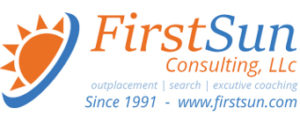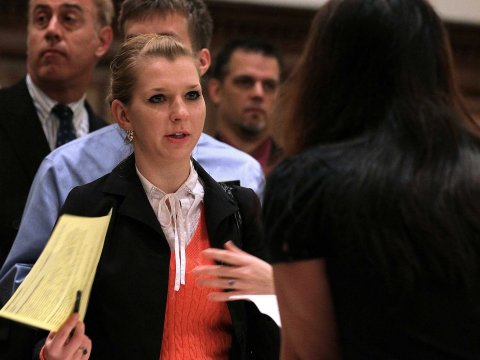In December, Points of Light and Bloomberg LPreleased the 2014 Civic 50—a list of the most community-minded companies in the country. The Civic 50 sets the standard for corporate citizenship, honoring companies that are effectively giving their time, talent and resources to improve lives in the communities where they do business.

This is part two of a five-part series that examines the trends and highlights released in Points of Light’s report, The Civic 50: A Roadmap for Corporate Community Engagement. In this piece, I worked with Yvonne Siu Turner of Points of Light to find out from Margot Copeland, Chair and CEO of KeyBank Foundation, what inspires her to lead the company’s corporate citizenship efforts, and how KeyBank has created a culture of service.
Like this Article ?? Share it ! First Sun Consulting, LLC- Outplacement/Executive Coaching Services, is Proud to sponsor/provide our ‘FSC Career Blog’ Article Below. Over 600 current articles like these are on our website in our FSC Career Blog (https://www.firstsun.com/fsc-career-blog/) with the most updated/current articles on the web for new management trends, employment updates along with career branding techniques .
You now can easily enjoy/follow Today our Award Winning Articles/Blogs with over 120K participates Worldwide in our various Social Media formats below:
FSC LinkedIn Network: Over 6K+ Members & Growing ! (76% Executive Level of VP & up), Voted #1 Most Viewed Articles/Blogs, Members/Participants Worldwide (Members in Every Continent Worldwide) : Simply Connect @ www.linkedin.com/in/frankfsc/en , Click the Connect button, Cut/Paste our E-Mail firstsun1991@gmail.com, Click Send Invitation. That Simple.
- Twitter: Follow us @ firstsunllc
educate/collaborate/network
Look forward to your Participation !
continue of article:
Q: A culture of service depends on policies, incentives and systems to support and sustain corporate community engagement efforts. Tell us about KeyBank’s policies and incentives.
A: Our culture of community engagement is longstanding. KeyBank is more than 160 years old and KeyBank Foundation is 45 years old this year. Throughout the decades, we’ve implemented a number of policies that we regard today as simply part of our culture. For example, we strongly encourage employees to volunteer in their communities. On Neighbors Make the Difference Day, our annual day of volunteerism supported by paid time off, our goal is to have half of our 14,000 employees to volunteer across the country, from Alaska to Maine. We achieved this last year, with 50 percent of our workforce participating in 900 projects. Super Refund Saturday is another important day of service for us, where we provide free tax preparation for hardworking local residents trying to make ends meet.
Apart from these days of service, we encourage employees to continue volunteering throughout the year. We currently have more than 600 volunteers who teach our free financial education curriculum to the public, helping people better understand saving, spending, We encourage employees to volunteer on nonprofit boards and take an active role in matching employees with interested nonprofits, in partnership with an organization called Business Volunteers Unlimited: Center for Nonprofit Excellence. Board placement is led at the corporate level by the KeyBank Foundation and supported at the market level by Key’s market executives.
I myself am honored to serve as a trustee of Kent State University, the Thomas White Foundation, Kenneth Scott Foundation, University Hospitals Health System and the Delta Foundation in Washington, DC. To show support of employees’ board service, we provide annual $500 Community Leadership Grants to each organization (up to four per employee) that includes one of our employees on its board.
Our matching gift program allows an employee to make a gift, use the receipt as proof and then request a matching amount from KeyBank, which is sent directly to the organization. Through this Matching Gift Program, employees have a say in how and where we give. In 2014, we contributed nearly $4 million through employee gifts, matching corporate contributions and United Way fundraising.
Q: Peter Drucker once said that “culture eats strategy for breakfast.” How important are policies and incentives to creating a culture of service at KeyBank?
A: Business strategies grounded in solid, long-standing values are always superior to strategies that are merely opportunistic or that view customers as mere “transactions.” Setting the tone at the top is extremely important. From the CEO down, we expect and foster a culture of service, as well as a commitment to diversity and inclusion, among our 14,000 employees. The “shadow of the leader” is a very real concept at Key, and our leaders are heavily involved in their communities. We purposefully hire, promote and retain those who are invested in building thriving communities, and select questions we ask potential leaders during interviews revolve around the importance of community service. At any given time, there are dozens of service and volunteer initiatives throughout the bank.
We intentionally established a structure that supports our values when we launched a Corporate Responsibility department in 2012. Created by our CEO Beth Mooney and led by Executive Vice President Bruce Murphy, the department includes the bank’s philanthropy, volunteerism, sustainability, diversity and inclusion, and Community Reinvestment Act initiatives.
The Corporate Responsibility department influences all segments of the bank. It provides both expert leadership and direct guidance on how best to invest in our people and the planet and how we can achieve profits responsibly. The department aligns the conduct of the entire bank in a way that produces an industry standard for responsible banking. In the end, we see a competitive advantage in the marketplace because we are a responsible business partner.
Q: How did you choose which policies and incentives were the right fit for KeyBank?
A: All of our policies support our purpose of “helping our clients and communities thrive.” Let me give you an example of a recent policy that directly supports our value of diversity: Valuing diversity and fostering an environment of inclusion are among Key’s highest strategic priorities. We believe that diverse individuals bring with them unique backgrounds, experiences and ideas, which make KeyBank stronger. The lenses of diversity and inclusion are considered when we recruit talented employees, invest in our communities, engage in grant-making, volunteer, develop vendor partnerships and reach out to customers.
Two years ago, the Foundation carefully looked at specific practices of certain nonprofits that directly opposed Key’s values and policies related to inclusion. In June 2013, the KeyBank Foundation Board adopted a non-discrimination policy, stating that, “KeyBank Foundation shall not make any grants, whether through its employee matching gift program or otherwise, to charitable organizations that discriminate against individuals on the basis of race, color, religion, national origin, age, gender, gender identity, disability, or sexual orientation.” This decision demonstrates our continuing corporate commitment to advancing the concept of inclusion.
Q: Did you struggle with any policy or incentive at first?
A: Recently, we have been challenged with aggregating and quantifying the good work our 14,000 employees are doing. We know we are helping clients and communities thrive, and celebrating this is important to us, but it has been difficult to track. That’s why, at the end of last year, we decided to use new software that will allow our employees to share with us their good works and allow us to reward their volunteerism. We’re proud of our employees, and we want them to know just how much they are valued. We look forward to the full deployment of this system in 2015 and to sharing how the incentive program has been received.
Q: What inspired you to pursue a career in corporate citizenship and what inspires you in the day-to-day of your job?
A: To pinpoint an event, day, or time is difficult, so I must attribute my life approach to my upbringing. Throughout my entire career, I have been inspired to volunteerism and community service. It’s a part of the very way I live and operate. You could ask others who know me and they would say I’m a relationship person – people are extremely important to me. I know that building connections are the way to create change.
Long before I came to Key, I had a track record in community affairs and was a champion of civic vitality, which is part of the reason I was offered the job. To me, affecting change is about going directly to where the need is greatest and serving there. When you care deeply and are deeply connected, you can put the right policies and people in place with greater speed and efficiency. To see transformation happen – in individual lives, as well as institutions – is exciting to me and constantly keeps me inspired.
Forbes.com | March 23, 2015 | Cause Integration














